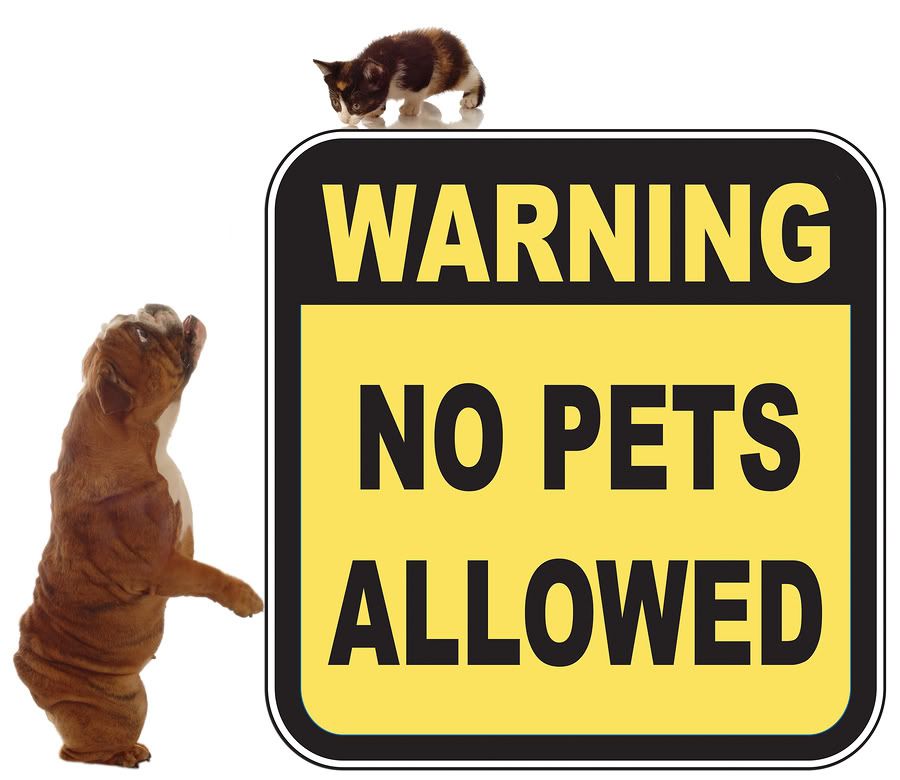
Despite hurdles to find a pet friendly place–it seems as though the rental industry may need to change to accommodate the demands as pet owning households increase.
Look what a recent survey of renters around the country found:
Nearly 90 percent of the renters who responded said they have a pet.
Of the renters surveyed that do not currently own a pet, more than half plan to become pet owners within the next year.
More than 80 percent of respondents said a pet-friendly policy played a major role in where they chose to live and 30 percent sought out an apartment in close proximity to desirable pet amenities such as dog parks, walking trails and a veterinary office.
As devoted pet owners, renters are holding on to their felines and canines even when faced with obstacles during their apartment search. While the majority of respondents experienced difficulty finding an apartment that allowed pets, 89 percent said they were not put in a position where they had to choose between their beloved animal and a place to live.
Apartments.com has seen an upward trend of more and more properties welcoming pets. For survey respondents who said they were forced to give up their pet(s), the two main causes were identified as not being able to find an apartment with a pet-friend policy (65%) or not being able to afford the pet deposit (27%).
More than half of renters surveyed said they paid more than $200 for a pet deposit, and nearly 60 percent said they would be less likely to rent an apartment requiring a pet deposit.
Millions of renters from around the country are in need of pet-friendly apartments. In 2008, more than 11 million searches for apartments that allow cats and dogs were conducted on Apartments.com.
I’ve discussed this issue previously and suggested renters construct a Pet Resume.
In addition, you might want to read this post on the Mortgage Crisis & Homeless Pets.
To be successful in finding a rental, make sure you ask permission. Many landlords will accommodate you but some have a strict policy of “no pets allowed.”
If you have plans to get a pet make sure to check that it is okay before signing the lease.
If you are seeking a pet-friendly place, begin your search online. Most online apartment search sites allow users to conduct a pet-friendly apartment search.
Be sure to ask your potential landlord if there are any size or weight limitations. Some buildings may even prohibit specific breeds.
Plan on paying a pet deposit. Some properties charge an additional deposit to renters with pets, or may even ask for a monthly fee for pet rent.
When visiting a potential rental, confirm any additional costs associated with owning a pet. Remember to also ask if the deposit is refundable or non-refundable.
Will this mean that the rental industry will change?
Let’s hope so.


Disturbing Pet Trends
Sharing your experiences out on the Internet can be a good thing but it also can be misleading to those who don’t know any better.
I read a post this morning where the blogger shared her personal life but wish she would have done some education in the process.
There is another blogger who has a pretty large following but who I quit reading when he started being irresponsible in spouting his beliefs on the subject of proper pet diets.
The problem with the Internet is that many people don’t sort through the material they are reading and take much of it as gospel.
The pet industry as a whole has changed to adapt to the desires and needs of the pet parents aka pet guardians aka pet owners aka companion animal custodians.
Some of the pet trends are disturbing to me–the ones that really make me crazy are the ones that actually harm the animals.
Now this post overlaps with but also goes beyond what I wrote in Ten Stupid Mistakes Pet Owners Make.
So, without much further ado I want to rant about the pet trends I find most disturbing.
Pet Accessories & Pets AS Accessories
I recently read, One Nation Under Dog which gives a good comprehensive view of the pet industry and trends as they stand today.
Two of those trends include pets as accessories AND pet accessories.
Some pets like being dressed up because they get a lot of attention. But many don’t like it at all.
However what disturbs me about this humanization trend is that animals become, not a unique breed or species, but they morph into live dress up dolls for their humans.
The problem goes beyond that though–in many situations people are using dogs as accessories (Wow does that “insert small dog breed here” look great in your designer bag aka pet carrier!
Puh-lease!
Now I know some animals get cold and need sweaters or coats but a dress for every day of the week?
And how many of those animals being carried also suffer from weight problems or other issues?
Who’s the Boss?
Now because I am into training and behavior–what really disturbs me is the trend where people are the ones being trained by the animals.
Any animal trainer worth his or her salt knows that you have to train the humans–but most pet households allow the animals to take charge.
What does this mean?
Well, it means it is good for the dog training and behavior business!
But seriously, it translates into behavior problems, health problems, and unruly critters whose owners make excuses for the mess they have created.
Some how it always becomes the animal’s fault and the critter ends up excluded from family life, travel, and left outside when it is possible…and others end up relinquished to shelters.
Pet Health
Pet health and grooming habits really suffer when pet wellness practices are not up to speed.
If you cannot trim the nails, inspect the ears, brush or comb your pet–there is a problem. These are practices that should be daily or weekly habits that the animal enjoys.
Last week I actually met people who were taking their pups out into canine traffic areas when the pups did not have ANY vaccinations.
Now there is a debate over inoculations BUT exposing an animal to the risk of disease is irresponsible because deaths from distemper and parvo-virus are tragic.
Each spring animals head to the groomer to be shaved because the owners won’t (or can’t) groom them. Under those matted coats are some pretty disgusting things–such as parasites, infections, and skin problems.
The ultimate problem in this category is that people do not get their animals into the vet or groomer or “insert other pet professional here” until it is a serious problem.
Pet Obesity
Using food to create a bond with animals has gone to a whole new level with an endless supply of treats, snacks, or meals simply because “the pet looks hungry” or “he deserves it.”
When over 40% of the pet households contain animals that are overweight or obese it signals a larger problem–which includes more disease, shorter life spans, and other complications.
Legal Beagles
Now there are a whole lot of new legal issues facing pet households when it comes to providing for pets after an owner dies, through a divorce, and when they damage property or bite someone.
But there are also laws on the books to regulate animals and where they can go but for some reason there are a whole lot of people who think that the laws don’t apply to them.
Just this last week, during my travels, I met people who had dogs off leash on a beach where it was not legal.
The local beach patrol fenced off an area for the nesting area of an endangered species because both animals and humans won’t stay out otherwise.
Did I mention that the dogs crapped all over the place and that the owners never cleaned up after them? It wasn’t a dog beach either.
In my area, the dog excrement poses threats to local wildlife (disease and parasites) and on the beach it becomes a health hazard not just to people but to wildlife in the ocean.
Why do we now have to rely on animal services to enforce laws when common courtesy or common sense should reign supreme?
Now it is your turn–what pet trends do you find disturbing?